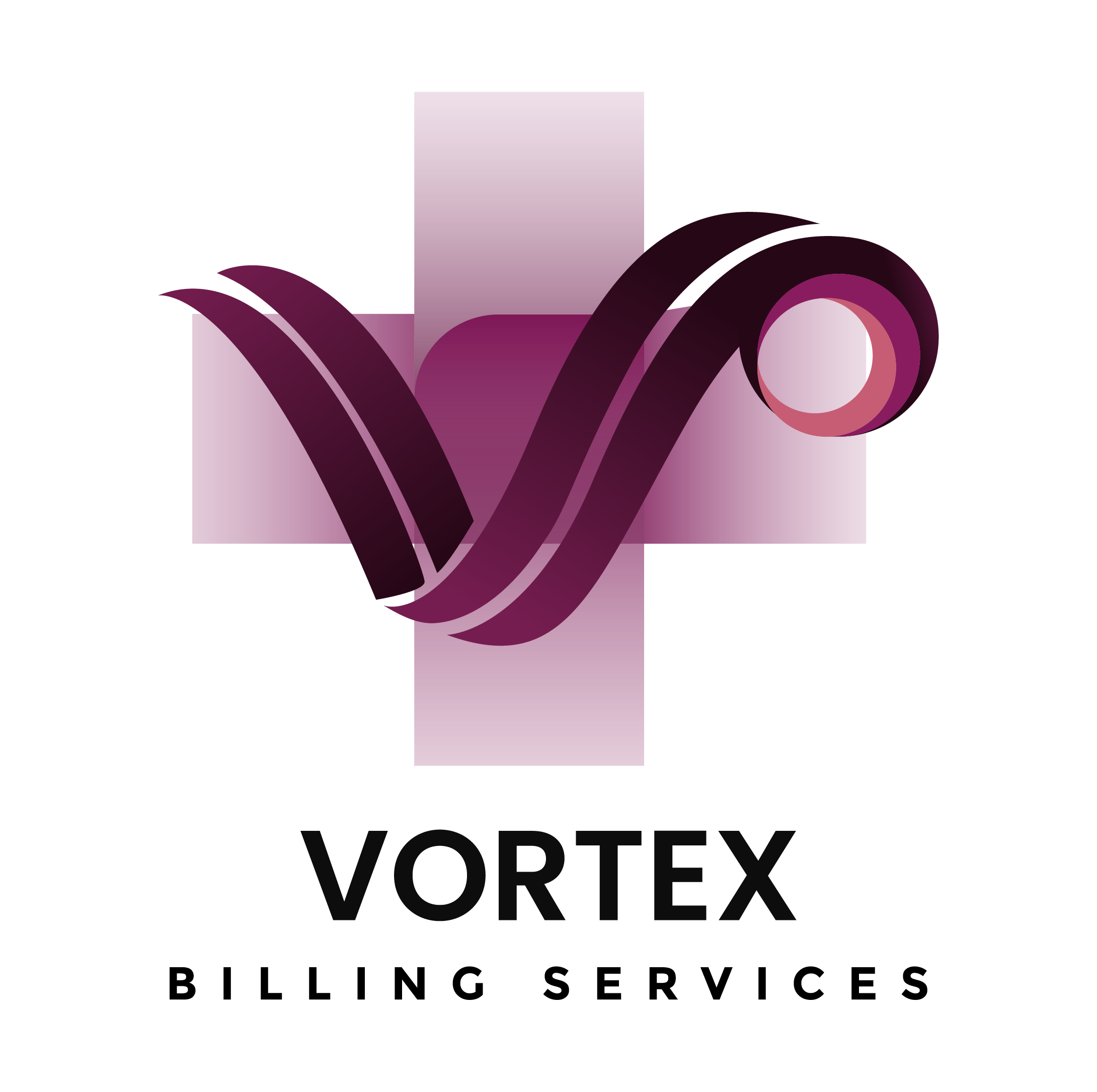Avoiding the Top 10 Revenue Cycle Management Mistakes: A Guide for Healthcare Providers
When it comes to managing the financial health of your practice, even small revenue cycle management (RCM) mistakes can have a massive impact. Healthcare providers across the USA often find themselves losing tens of thousands of dollars annually—not because of patient volume or medical outcomes, but due to inefficient billing practices and avoidable administrative errors. The truth is, by avoiding these top 10 RCM mistakes, healthcare providers can significantly increase their revenue, improve patient satisfaction, and maintain regulatory compliance.
In this article, we’ll break down the most common pitfalls in RCM that affect medical practices and clinics. Whether you’re a new practice just getting started or a growing clinic looking to streamline operations, these insights will help you stay on track and avoid costly errors.
Introduction to Revenue Cycle Management (RCM)
What Is Revenue Cycle Management in Healthcare?
Revenue Cycle Management (RCM) refers to the entire financial process used by healthcare providers to track patient care episodes from registration and appointment scheduling to the final payment of a balance. It involves verifying insurance, coding claims, billing, payment collection, and managing denied claims.
Essentially, RCM is the lifeline that keeps your practice running. If one part of the cycle breaks down—say a coding error or a delay in claim submission—it affects everything downstream. That means lost revenue, delayed payments, and possibly even legal trouble if compliance isn’t upheld.
In today’s healthcare ecosystem, where regulations are tightening and patient expectations are rising, effective RCM isn’t just a nice-to-have—it’s a business necessity.
Why RCM Matters for Healthcare Providers in the USA
In the competitive and heavily regulated U.S. healthcare marketplace, healthcare providers must do more than deliver excellent care—they must also operate efficiently and profitably. RCM directly impacts how quickly and accurately a provider gets paid.
For example, poor coding accuracy or delayed billing can result in denied claims and long payment cycles. This cash flow interruption not only makes it harder to manage day-to-day operations but also affects your ability to invest in new technology, hire staff, or expand your services.
To succeed, medical practices must embrace transparent, cost-effective, and technology-driven RCM systems that ensure every dollar earned is actually collected.
Mistake #1 – Incomplete or Inaccurate Patient Information
How This Error Impacts the Revenue Cycle
You can’t bill what you don’t know. One of the most frequent and costly mistakes healthcare providers make is failing to collect complete and accurate patient data at the outset. That means missing information like insurance ID numbers, addresses, or even the patient’s full name can delay claim processing or cause outright denials.
These mistakes create a domino effect. Incorrect data leads to errors in eligibility verification, which causes claim rejections, resubmissions, and an overall lag in reimbursement. For busy practices, chasing down missing details later becomes a huge administrative burden.
Even worse? Patients may grow frustrated when asked for the same information multiple times or hit with unexpected bills because their insurance wasn’t verified properly.
Prevention Strategies and Technology Solutions
Here’s what works:
- Digital Intake Forms: Use electronic registration forms that validate fields in real-time to minimize human error.
- Staff Training: Your front desk staff are your first line of defense. Train them to ask the right questions and double-check entries.
- EHR Integration: Use Electronic Health Records (EHR) that sync with your billing software to prevent data discrepancies.
Smart practices even use AI-powered tools that flag inconsistencies in patient information before the billing process begins. This kind of forward-thinking approach drastically reduces downstream RCM issues.
Mistake #2 – Inefficient Insurance Verification Processes
Financial Implications for Healthcare Providers
Insurance verification isn’t just a box to check—it’s a critical step in ensuring you get paid. Yet many healthcare providers still treat it as a routine task, often rushing through it or skipping real-time checks. The result? Claims sent to the wrong payer, expired policies, and services rendered without knowing coverage limits.
Every claim denial due to ineligibility or pre-authorization issues translates to real dollars lost. On average, practices that don’t verify insurance upfront see denial rates upwards of 15%, which is well above the industry benchmark.
It’s not just a financial issue—it’s a patient experience issue. Imagine being told after a procedure that it’s not covered and now you owe thousands out of pocket. That patient is unlikely to return, and your reputation takes a hit.
Best Practices for Streamlining Insurance Checks
Modern practices leverage technology to automate and streamline the insurance verification process:
- Real-Time Eligibility Tools: These tools let staff check coverage before the patient even arrives.
- Automated Reminders: Integrate systems that prompt staff to re-verify insurance details for returning patients.
- Batch Verification: For high-volume clinics, verify multiple patients at once to save time.
Above all, this process should happen before the appointment, not during or after. Getting it right upfront saves everyone headaches later.
Mistake #3 – Coding Errors and Non-Compliance Issues
Common Coding Mistakes in Clinics and Practices
Coding is the language of billing—and mistakes in this language cost money. Whether it’s upcoding, undercoding, or mismatched codes, these errors lead to rejected claims, payment delays, or worse, audits and penalties.
Some of the most common errors include:
- Using outdated CPT or ICD-10 codes
- Forgetting modifiers
- Failing to link the diagnosis code to the correct procedure
These mistakes may seem small but add up fast. A recent survey found that 42% of claim denials in the U.S. are due to coding issues.
The Compliance Risks and Revenue Loss
Incorrect coding doesn’t just affect payment—it can be a red flag for compliance audits. Regulatory bodies like CMS (Centers for Medicare & Medicaid Services) routinely review claims for fraud or abuse. Consistent errors might suggest intentional upcoding or deceptive practices, even if the intent was innocent.
To prevent this:
- Hire or consult with certified medical coders.
- Use coding audit software that flags potential mistakes before submission.
- Stay updated on code changes (they occur yearly).
Coding is one area where cutting corners can lead to long-term damage. Investing in accuracy upfront always pays off.
Mistake #4 – Delayed Claim Submission and Follow-Up
Lost Revenue Due to Missed Deadlines
Healthcare billing isn’t just about accuracy—it’s also about timeliness. Insurers impose strict deadlines for claim submissions, sometimes as short as 30 days from the date of service. Miss those windows, and you lose the right to be paid altogether.
It’s not just about late submissions either. A claim that goes unacknowledged or denied without follow-up is revenue lost in limbo. And sadly, this happens far too often in understaffed or disorganized clinics.
Timely Filing and the Role of Automation
To combat this, smart healthcare providers use automation tools and tracking systems that:
- Alert staff to claims approaching the filing deadline
- Automatically flag denials for follow-up
- Generate reports on outstanding claims
The key is consistency. Have a daily or weekly routine where billing staff monitor claim status and take corrective action. This alone can recover thousands in potential lost revenue each month.
Mistake #5 – Failure to Properly Train Administrative Staff
Training Gaps That Cost Healthcare Providers
Your admin team plays a direct role in your practice’s financial success. Yet many clinics overlook the importance of proper training in billing, coding, insurance processes, and patient communication.
A single untrained front-desk staff member can introduce errors at every stage of the RCM process—missed co-pays, incorrect data entry, or failure to collect required documents.
Investing in Team Knowledge for Better RCM
Ongoing training isn’t optional—it’s essential. Schedule quarterly sessions to update staff on:
- Insurance policy changes
- HIPAA compliance updates
- New billing software features
Consider incentivizing accuracy and speed, and create SOPs (Standard Operating Procedures) to ensure everyone is following the same playbook.
Mistake #6 – Lack of Transparent Billing Practices
Impact on Patient Trust and Provider Reputation
Transparency in billing isn’t just a buzzword—it’s a necessity. When healthcare providers fail to clearly communicate the cost of services, expected co-pays, or balances due, it erodes patient trust. This lack of clarity can result in billing disputes, delayed payments, or even patients avoiding follow-up care altogether.
In a competitive healthcare market like the USA, your reputation is currency. Surprise medical bills are one of the most common reasons for negative reviews and patient attrition. Worse, recent legislation like the No Surprises Act puts legal pressure on providers to offer clear, upfront cost information. Failing to do so can result in hefty fines and compliance penalties.
Many practices still use outdated billing systems that don’t provide itemized bills or real-time patient responsibility estimates. This leads to confusion and frustration on both sides of the front desk.
The Role of Transparent, Cost-Effective Medical Billing Solutions
The fix? Modern, transparent billing practices.
- Upfront Estimates: Use technology that provides patients with accurate cost estimates before procedures.
- Itemized Statements: Ensure patients receive detailed bills that break down services rendered.
- Self-Service Portals: Let patients access their billing history, insurance claims, and payment status online.
Healthcare providers who prioritize transparency often see faster payments, fewer disputes, and more satisfied patients. It also positions your practice as ethical and trustworthy—two traits that are invaluable in patient retention.
By aligning your billing practices with transparency standards and leveraging technology-driven solutions, you not only meet compliance benchmarks but also create a more loyal patient base and a healthier bottom line.
Mistake #7 – Neglecting Denial Management
The Cost of Ignored or Mishandled Denials
Claim denials are inevitable in the healthcare industry. What separates successful healthcare providers from struggling ones is how quickly and efficiently they respond to those denials. Unfortunately, many clinics either don’t track denials or fail to act on them altogether.
Ignored denials result in unpaid services, wasted resources, and unnecessary stress on your billing department. In fact, about 65% of denied claims are never reworked, which is a direct hit to your revenue.
What makes this worse is that most denials are preventable—missing pre-authorizations, incorrect patient data, or outdated codes being the usual culprits.
Building a Strong Denial Management Workflow
To combat this, implement a structured denial management process:
- Denial Tracking Software: Use RCM tools that flag denials instantly and assign them to specific team members.
- Root Cause Analysis: Don’t just resubmit—understand why a claim was denied and fix the process upstream.
- Denial Prevention Training: Educate staff on frequent errors and how to avoid them.
You should also audit denial patterns monthly to identify recurring problems. If denials are coming from a particular payer or tied to specific procedures, you’ll want to take corrective action fast.
Healthcare providers who take denial management seriously recover up to 90% of previously denied revenue. That’s a number too big to ignore.
Mistake #8 – Overlooking Patient Payment Collection
The Growing Importance of Point-of-Service Collections
Today’s patients are responsible for a larger portion of their healthcare costs than ever before due to rising deductibles and co-pays. Yet many healthcare providers still delay or neglect collecting payments at the time of service, hoping to chase them down later via statements or calls.
This “bill them later” mentality leads to increasing accounts receivable (AR) and lower collection rates. In fact, the likelihood of collecting from a patient drops by 50% after they walk out the door.
Patients appreciate transparency and the opportunity to pay upfront—especially if you offer flexible options. Failing to collect at the point of service is a missed opportunity both financially and reputationally.
Technology-Driven Payment Solutions for Healthcare Providers
Here’s how you can improve collections:
- POS Terminals: Equip front-desk staff with tools to collect payments before patients leave.
- Online Payment Portals: Let patients pay their bills via mobile, email, or web platforms.
- Payment Plans: Offer installment plans for high-cost procedures, improving affordability and compliance.
Also, set clear policies and train staff to confidently discuss payment expectations. With the right tools and approach, practices can collect more while actually improving the patient experience.
Mistake #9 – Inadequate Use of RCM Technology
Manual Processes That Drain Resources
Still using spreadsheets or outdated billing software? You’re not alone—but that doesn’t make it okay. Manual RCM processes are slow, error-prone, and incredibly costly in today’s fast-paced environment. When healthcare providers don’t leverage modern tools, they increase the risk of human error, compliance issues, and slow reimbursement cycles.
From scheduling to claims submission and denial management, every stage of the revenue cycle can benefit from automation and integration. Yet many clinics hesitate due to upfront costs or lack of in-house expertise.
But here’s the truth: not upgrading your RCM technology is costing you far more in lost revenue than the investment would.
Why Technology-Driven Solutions Are a Must for Healthcare Providers
Advanced RCM platforms offer:
- Automated Claim Scrubbing: Flagging errors before submission.
- EHR Integration: Seamless sharing of patient, provider, and billing information.
- Analytics Dashboards: Real-time data to monitor revenue trends and workflow bottlenecks.
For U.S.-based healthcare providers, the shift toward technology is no longer optional. It’s essential for staying compliant, competitive, and financially healthy.
Look for cloud-based solutions that offer real-time access, HIPAA compliance, and scalability to grow with your practice.
Mistake #10 – Ignoring RCM Data and Analytics
Missed Opportunities in Revenue Optimization
You can’t fix what you don’t measure. Many healthcare providers fail to utilize the rich data sitting in their RCM systems. Whether it’s tracking denial rates, patient payment behavior, or reimbursement timelines, this data offers invaluable insights into where money is being lost and where improvements can be made.
When data goes unused, problems go unnoticed. You might be losing thousands in missed follow-ups, underbilling, or prolonged accounts receivable—and not even know it.
Using Data to Drive Smart Business Decisions in Medical Billing
Here’s how to turn data into dollars:
- Set Key Metrics: Focus on denial rates, days in AR, and first-pass resolution rate.
- Regular Reporting: Run weekly and monthly reports to track performance trends.
- Decision-Making: Use insights to retrain staff, renegotiate payer contracts, or update technology.
Healthcare providers who track and act on RCM data consistently outperform those who don’t. It’s the difference between reacting to problems and preventing them altogether.
Compliance Risks and Legal Liabilities
Beyond financial losses, RCM mistakes can expose healthcare providers to serious compliance issues. Incorrect billing can trigger audits from payers or regulatory bodies, resulting in penalties, refunds, or even fraud investigations. The Office of Inspector General (OIG) and CMS are increasing their scrutiny of billing practices, especially for providers that show a high volume of resubmitted or rejected claims.
The reputational damage from a compliance issue is hard to measure—but it’s significant. Patients lose trust, referrals dry up, and your practice could be blacklisted by insurers.
To stay protected, practices need not just accurate billing but also transparent documentation, audit trails, and policy adherence at every touchpoint.
How to Improve Your RCM Strategy
Partnering with a Professional Medical Billing Service
Sometimes, the smartest move is to bring in the experts. By outsourcing RCM to a professional medical billing service, healthcare providers in the USA gain access to specialized teams, advanced technologies, and proven workflows that maximize revenue collection.
A good billing partner ensures:
- Claims are submitted accurately and on time
- Denials are reworked quickly
- Payments are posted and reconciled promptly
- Compliance standards are met consistently
More importantly, they free up your in-house team to focus on patient care and strategic growth.
When selecting a partner, look for those who offer transparent pricing, real-time reporting, U.S.-based support, and customizable solutions for your specialty and size.
Building Internal Accountability and Oversight
Even if you outsource, your practice should maintain internal accountability for financial performance. That means:
- Assigning roles and responsibilities for billing-related tasks
- Conducting internal audits at regular intervals
- Reviewing KPIs (Key Performance Indicators) monthly
- Holding team meetings to discuss challenges and improvements
Empower your team to understand that revenue cycle management is everyone’s responsibility—not just the billing department’s. This culture shift alone can have a powerful impact on performance.
Benefits of Technology-Driven RCM Solutions
Automation, Accuracy, and Cost-Effectiveness
Technology is no longer optional in healthcare—it’s foundational. Modern RCM solutions use automation to reduce manual tasks, improve accuracy, and speed up the entire billing cycle. For example:
- Claims are checked against payer rules before submission
- Patient eligibility is verified in seconds
- Payments are posted automatically
This reduces rework, improves first-pass resolution rates, and helps healthcare providers collect more money, faster.
Future-Proofing Your Healthcare Revenue Cycle
Healthcare is evolving rapidly—with new payment models, stricter regulations, and higher patient expectations. To stay competitive, practices need systems that are:
- Scalable: Capable of handling growth and change
- Interoperable: Compatible with EHRs, patient portals, and clearinghouses
- Secure: Compliant with HIPAA and data privacy laws
Investing in the right RCM technology now helps protect your practice from disruptions later. It’s the difference between running just to keep up—or confidently leading the pack.
Choosing the Right RCM Partner in the USA
What to Look for in a Transparent Medical Billing Provider
Not all billing partners are created equal. To get the best value, healthcare providers should look for firms that:
- Offer transparent pricing—no hidden fees or ambiguous billing tiers
- Provide real-time access to performance data and claims status
- Have experience in your medical specialty
- Maintain compliance with CMS, HIPAA, and payer regulations
- Utilize technology-driven workflows for maximum efficiency
Avoid vendors that rely heavily on manual processes, outsource overseas without clear oversight, or can’t demonstrate performance metrics.
Questions to Ask Before Signing a Contract
Before you commit, be sure to ask:
- What is your first-pass claim resolution rate?
- How do you handle denials and follow-ups?
- What kind of support and training do you offer?
- Can you provide references from similar-sized practices?
- How do you ensure data security and compliance?
Choosing the right partner can transform your revenue cycle from a weak point into a competitive advantage.
Conclusion: Avoiding These Mistakes to Protect Your Bottom Line
Every dollar lost to RCM mistakes is a dollar that could have gone toward patient care, staff development, or expanding your services. For healthcare providers in the USA, optimizing the revenue cycle is no longer optional—it’s the foundation of a sustainable, profitable practice.
From inaccurate patient info to neglected denial management, these 10 mistakes can cost your clinic significantly. But the good news is they’re all preventable. With proper training, transparent systems, automation, and the right partners, you can plug the leaks in your revenue stream and operate more efficiently.
Healthcare is hard work. Getting paid shouldn’t be.



